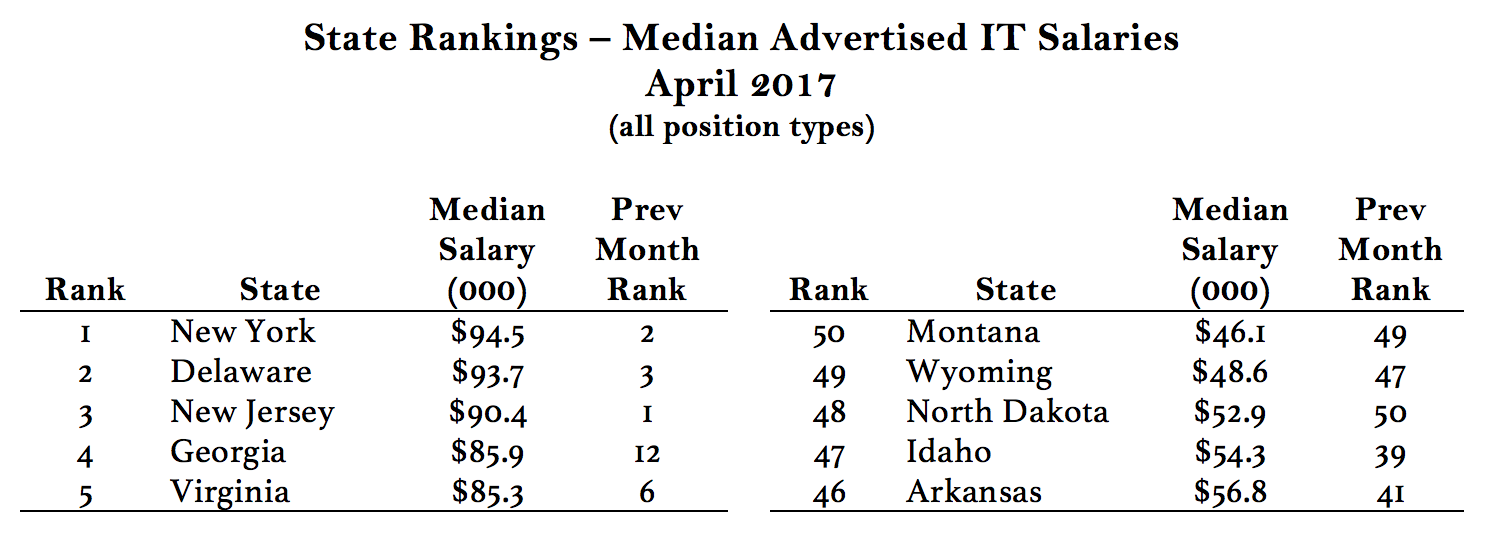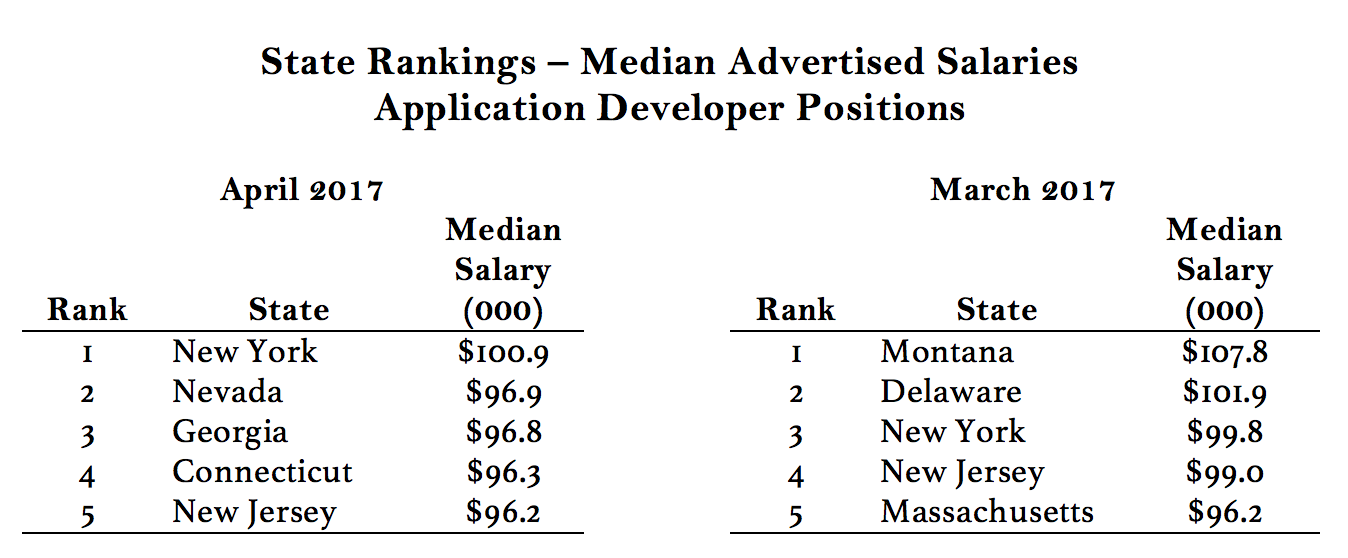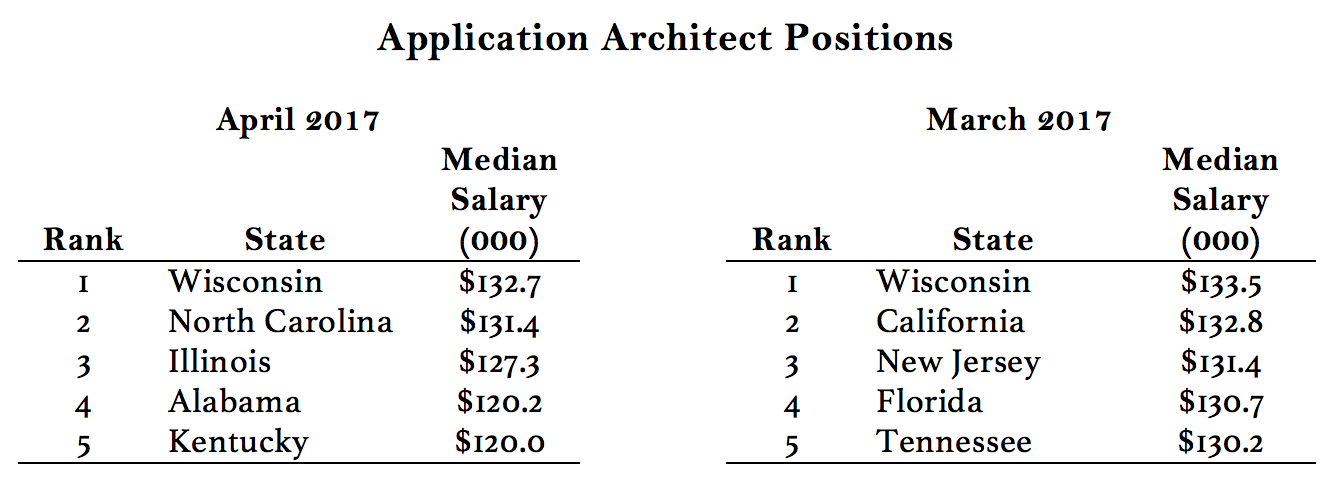Greenwich.HR Releases April’s State Rankings for IT Pay
According to Greenwich.HR’s monthly analysis of advertised pay for new IT positions, there is wide variation in IT salaries depending on the state where the position is located. While savvy managers know this intuitively, data is now available that shows these variances can often exceed 100 percent. And, local supply/demand conditions can cause large unexpected pay spikes, especially for high-skill roles like application architects and cybersecurity roles.
The main conclusion from the Greenwich.HR analysis: Local supply/demand considerations have such a large impact on pay requirements in competitive markets that traditional sources of pay data are no longer useful.

State Pay Differences Vary Significantly Depending On The Type Of Position
While the median advertised salary for all new IT positions in the US was $80.6 thousand during April, in New York the median was $94.5 thousand, and in Montana the median was $46.1 thousand. That’s a difference of nearly 105 percent.
But if you think managers in Montana should be discounting all IT pay by half compared to New York, you’d be disastrously wrong. Pay differentials for new positions across locations vary dramatically depending on the type of position. This is due to local supply and demand conditions. In March, for example, advertised pay levels for new application developers in Montana were the highest in the nation, even though Montana now ranks lowest for pay levels of new IT positions overall.
The impact of local conditions becomes even more pronounced for higher skill, high demand positions like application architects. As the tables below show, when local supply/demand imbalances occur, IT managers in states like Alabama, Kentucky, North Carolina, and Tennessee who typically pay relatively low on the scale can find themselves facing some of the highest salary requirements in the country.

 Traditional Salary Surveys and Economic Data Sources Are Inadequate In Competitive Labor Markets
Traditional Salary Surveys and Economic Data Sources Are Inadequate In Competitive Labor Markets
The implication for IT leaders, recruiters, and compensation managers is that traditional sources of salary data simply are not sufficient to reflect local market conditions. Traditional salary surveys measure pay rates that are often based on decisions made 2-3 years ago, and have relatively small sample sizes that don’t allow reliable local analysis. Having local, up-to-date data on pay and hiring trends is essential for making salary decisions and setting compensation policies in tightly competitive markets.
In the past, obtaining up-to-date local pay data has been nearly impossible due to the scarcity of reliable job market data, and limitations in the methods used to collect and publish salary benchmarks. But, those limitations are being stripped away by firms like Greenwich.HR, who collect large samples of labor market data, updated in real-time, to generate very precise local analyses.
About Greenwich.HR
Greenwich.HR provides real-time intelligence on the US labor market. Its April analysis of IT salaries included data from 27 thousand new IT jobs posted by nearly 16 thousand companies during the period of April 1 – April 30 2017. For a complete listing of state rankings, as well as analysis on hiring outlook, hot skills, pay distributions, and more, visit Greenwich.HR.


Recent Comments